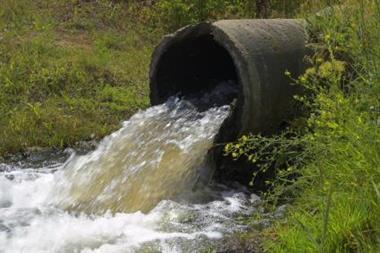The CEA says progress has been made in creating a genuine market for European environmental risks. But why has it taken so long? And what challenges remain?
Despite the absence of a genuine market for financial solutions to new environmental risks in Europe, progress has been made to increase the overall availability of coverage. These were among the key findings of a report recently published by the CEA, the representative organisation for the European insurance and reinsurance industry.
European insurers, and a spattering of risk managers, gathered in Brussels at a workshop, organised by the CEA’s Environmental Experts Working Group, to discuss the insurability of new environmental risks stemming mainly from the Environmental Liability Directive (ELD).
To begin with insurers provided something of an explanation for their delayed reaction to the new liabilities. ‘I think one of the challenges that insurers have is in relation to liabilities of which they have no experience and the data that would help them doesn’t exist,’ said Phil Bell, group casualty director Royal and Sun Alliance and chairman of the general liability committee of the CEA.
One of the big changes introduced by the Directive deals with a type of damage not covered by traditional insurance policies. Under the new rules the environment is treated as a legal entity for the first time and damages may be in the form of restitution of the environment to its state before pollution occurred. This could include a requirement to provide a habitat to replace that which has been damaged.
“One of the big changes introduced by the Directive deals with a type of damage not covered by traditional insurance policies.
While this concept is overarching, a key challenge for insurers is that the framework Directive establishes a number of state specific liabilities, which vary depending on the administration and enforcing authority. Some states have enacted the Directive with its full scope, while others have exceeded it. In this environment insurers have found it hard to offer products without knowing the full extent of the liabilities.
The variation between member states is considerable. Hungary, for example, has one of the strictest environmental liability regimes having gone well beyond what the directive requires. Environmental liabilities in Hungary extend to the directors and officers of operators as well as those shareholders who may have had a hand in polluting. These regional variations could limit the possibility of a pan-European catch-all policy. ‘It is perfectly feasible to have a European policy but because of the confusion in liabilities it may only be possible to find a few players offering products,’ said Bell.
In those countries where products have started to emerge, the government has stuck closely to the Directive. Spain and Germany are among the most proactive countries. Spain has an environmental liability insurance pool and in Germany the national insurance association has developed a model wording to help insurers write profitable cover. The wording has helped to develop an insurance market for the new type of liability, explained Nils Hellberg, head of liability and credit insurance for the Association of German Insurers. ‘Hardly a single insurer had the expertise to create an appropriate product single-handedly,’ he said.
But these countries represent an exception rather than the rule. At the time of writing less than half of the EU member states had enacted the Directive into their national law. A spokesperson for the Commission, Hans Lopatta, said he expected most states to have transposed the directive by the end of the year.
“In those countries where products have started to emerge, the government has stuck closely to the Directive.
Bell said the problem with a framework directive is that it leaves to much room for interpretation by individual jurisdictions, which can lead to cross border differences and even multiple regimes within a single country. In Austria, for example, environmental issues are regulated at a local level. A similar situation exists in Germany, Belgium and the UK, cautioned Lopatta.
The official view, however, is that leaving room for discretion reduces the potential for non compliance and the need for enforcement action. Nevertheless, the Commission is considering action against those states that have failed to meet the April 2007 deadline. And in the UK, where the Directive remains unimplemented, a parliamentary inquiry has been launched to discover why the transposition process has taken so long.
One area that member states have been granted flexibility is in the realm of compulsory financial security. While some advocate compulsory insurance, Bell is firmly against the idea believing a legal requirement for insurance is impossible with limited capital to support the business and prevents innovation. ‘Any consideration for compulsory insurance is far too early,’ warned Bell. FERMA also opposes compulsory financial security.
As many of the legal concepts are new to Europe the situation is mired in uncertainty—one reason why the CEA launched its working group. This uncertainty is compounded by a lack of detailed mapping of environmental risks and the kinds of potential pollution. Very little historical data exists for underwriters to assess the risks. Despite this, international insurers say they are able to write cover based partly on experiences in the US where similar liabilities have existed for decades. Nevertheless, there will always be some issues not covered by a policy, said Jurg Busenhart, vice president of casualty products, Swiss Re.
A plentiful European environmental insurance market with a suit of products that can serve buyers needs won’t appear overnight. It’s likely to be some time before insurance buyers have access to a genuine market in the area of emerging environmental risks—which, by their nature, are often hard for insurers to respond to with solutions. The Commission expects an uncertain environment to persist for 1-2 years.




















No comments yet